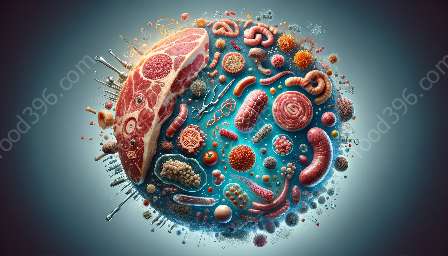Meat microbiology and science play a crucial role in understanding and preventing foodborne pathogens associated with meat. By exploring this topic, we can recognize potential risks and adopt effective control measures to ensure meat safety.
Overview of Foodborne Pathogens
Foodborne pathogens are microorganisms that can cause illness when consumed via contaminated food, often originating from animal products like meat. These pathogens include bacteria, viruses, parasites, and fungi, with some of the most common being Salmonella, Campylobacter, E. coli, and Listeria.
Risk Factors in Meat Safety
Meat serves as an ideal habitat for the proliferation of pathogens due to its nutrient-rich composition and the potential contamination during processing, handling, and storage. Understanding the factors influencing pathogen growth and survival in meat is crucial for ensuring its microbiological safety.
Implications for Meat Microbiology
The presence of foodborne pathogens in meat poses challenges for meat microbiology. Researchers in this field strive to identify, characterize, and control these pathogens through various approaches such as genetic analysis, antimicrobial interventions, and predictive modeling.
Meat Science and Food Safety
Meat science encompasses the study of meat processing, preservation, and quality, with a paramount concern for food safety. This discipline addresses the potential hazards associated with pathogens in meat and explores methods to minimize their impact on human health.
Prevention and Control Measures
To mitigate the risks associated with foodborne pathogens, the meat industry employs strategies such as good hygiene practices, proper refrigeration, cooking to adequate temperatures, and implementation of effective sanitation protocols.
Advancements in Detection and Analysis
Advancements in meat science and microbiology have enabled rapid and accurate detection of foodborne pathogens in meat products. Cutting-edge techniques like PCR, mass spectrometry, and biosensors aid in identifying and monitoring these pathogens, thereby enhancing meat safety.
Conclusion
Understanding the intricate relationship between foodborne pathogens, meat microbiology, and meat science is fundamental for ensuring the safety and quality of meat products. By embracing innovative technologies and stringent regulations, we can reduce the risk of foodborne illnesses associated with meat consumption, fostering a healthier and more secure food supply.

